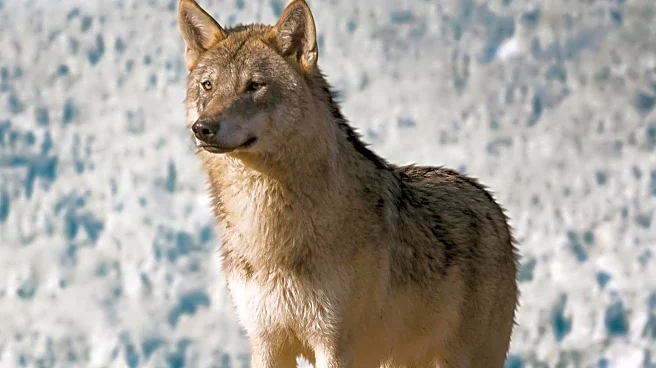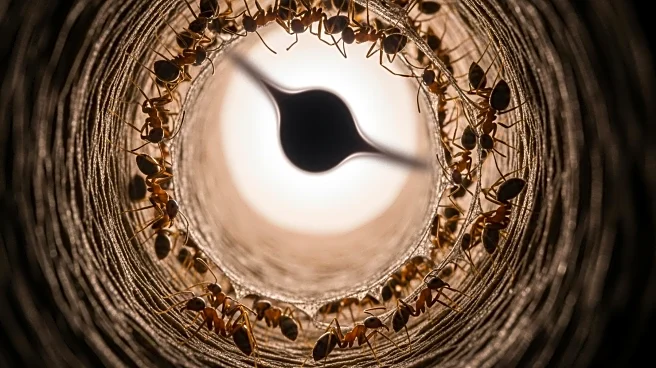What's Happening?
Recent research conducted by Jessica Leigh Dobson at Ghent University has uncovered that iridescent fur, previously thought to be exclusive to golden moles, is present in at least a dozen other mammal species. The study involved examining specimens at the Royal Museum for Central Africa, where Dobson noticed an electric blue glint on the fur of a tropical vlei rat. Further investigation revealed that 14 mammal species, including 10 rodents and the giant otter shrew, possess iridescent coats. The iridescence is attributed to the unique structure of the hair, which consists of highly compressed sub-parallel layers that bend light to create shifting colors.
Why It's Important?
The discovery of iridescent fur in multiple mammal species challenges previous assumptions about mammalian fur characteristics and opens new avenues for research into the evolutionary significance of iridescence. This phenomenon, which may serve functions such as visual communication, is more common than previously thought, suggesting that there may be more iridescent mammals yet to be discovered. Understanding the adaptive significance of iridescence could provide insights into the evolutionary pressures faced by these species.
What's Next?
The findings prompt further exploration into the ecological and evolutionary roles of iridescent fur in mammals. Researchers may investigate whether iridescence serves specific functions, such as mating displays or predator avoidance, similar to its role in birds. Additionally, the study encourages the examination of other mammal species for iridescent traits, potentially leading to the discovery of new species with this characteristic.
Beyond the Headlines
The study highlights the importance of revisiting and re-evaluating scientific assumptions, as previously overlooked traits can reveal significant biological insights. The presence of iridescent fur in mammals may also have implications for understanding the genetic and developmental pathways that lead to such traits, offering a broader perspective on mammalian diversity.











